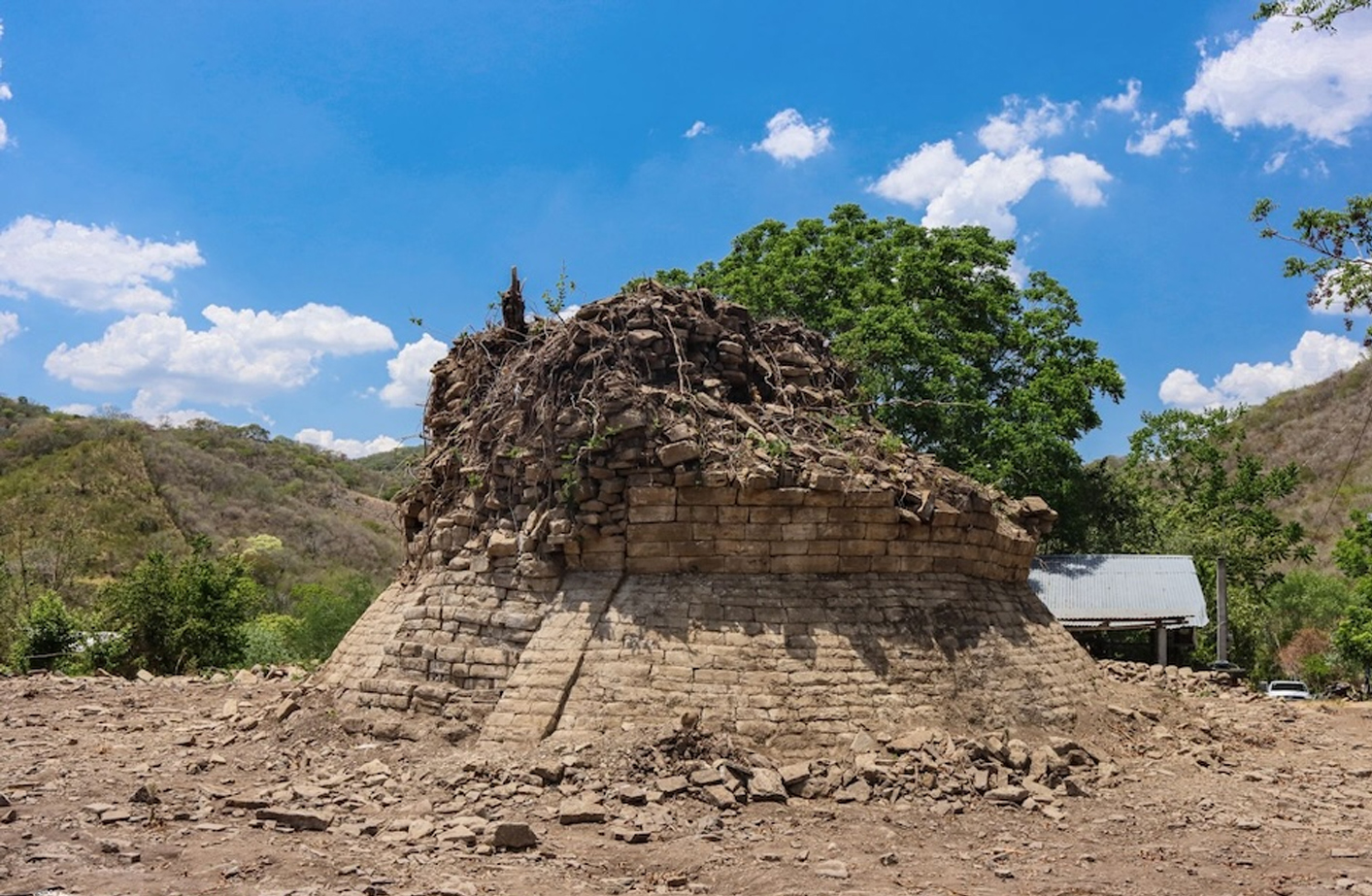Archaeologists from the National Institute of Anthropology and History (INAH) have found a pre-Hispanic structure used by locals for healing rites in Tecacahuaco, a town in the state of Hidalgo, Mexico.
According to oral legends recounted by the town’s elders, a priest ordered the destruction of monuments and idols in the area, considering them immoral remnants of paganism.
Despite the destruction, healers continued to visit a small hill regarded as sacred, making ceremonial offerings of liquor, bread, or zacahuil to cure the sick. This practice represents a blend of Catholic rituals and pre-Hispanic sacred traditions.
Following agricultural works by a local farmer, the hill was revealed to contain architectural remains of a monumental structure. Further excavations by INAH archaeologists have uncovered a pre-Hispanic building with a circular base, originally measuring 15 metres in diameter.
The structure stands 3.5 metres tall and features a central staircase flanked by two alfardas. Preliminary dating, based on surface finds of obsidian fragments, suggests that the structure dates from around AD 900 to 1521 during the Post Classic Period.
The latter end of the Post Classic Period saw the subjugation of the Mesoamerican cultures and civilisations, and the start of the Colonial Period under Spanish rule.
According to the researchers, the purpose of the structure is unknown, and the lack of any major pre-Hispanic settlements in the Huasteca region makes it more of a mystery. The team speculates that the structure was likely under the control of the Metztitlán, a powerful, independent Otomi state that resisted conquest by the Aztec Empire.
According to Osvaldo José Sterpone from INAH, “This is the first project that the INAH has undertaken in Tecacahuaco, a town in the Huasteca region of Hidalgo.” The town’s Nahuatl name translates to “place of hollow stone.”
A survey of the surrounding area has also revealed other nearby architectural remains, including a ball court that measures 18 metres in length.
“We have begun the work of photogrammetry and analysis that will allow us to document the characteristics of the buildings in the records of the Public Registry of Monuments and Archaeological and Historical Zones, in order to give certainty and identity to this area of monuments,” said Sterpone.
Header Image Credit : Gerardo Peña
Sources : INAH





